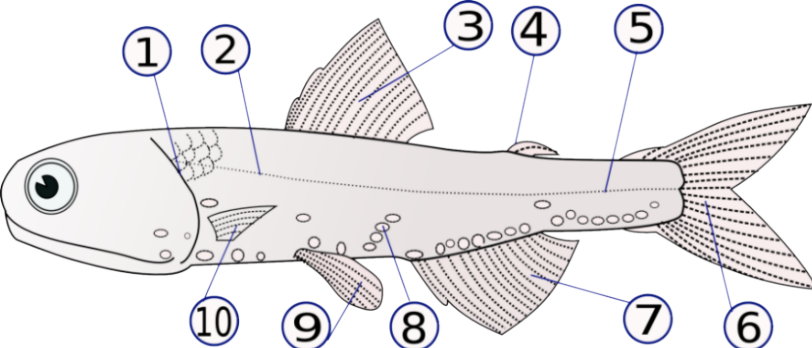Dictionary of Ichthyology

lateral line = a tube-like sensory organ (usually bearing pores) extending along the side of the body from the rear of the head to the tail. Detects water movements, low frequency vibrations (lower than 160-200 Hz) and perhaps temperature changes. In some fishes the sensory organs are uncovered (without a tube or pores). The sensory organs in the canal consist of a group of cells with sensory cilia projecting into the canal. A cupula of a gel-like substance caps the hair-like cilia. Water movements in the lateral line canal moves the cupula and stimulates the hair cells. The lateral line is innervated by the vagus or Xth cranial nerve. The similar sensory system on the head, often called the cephalic sensory canals, is differently innervated. Lateral lines may be single, multiple, complete (extend to the base of the caudal fin) or incomplete, have accessory branches, be decurved, recurved, arched. etc.